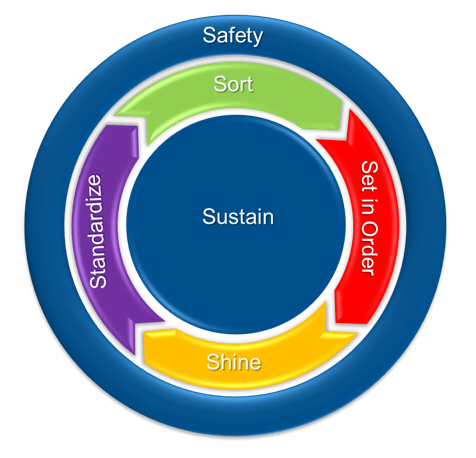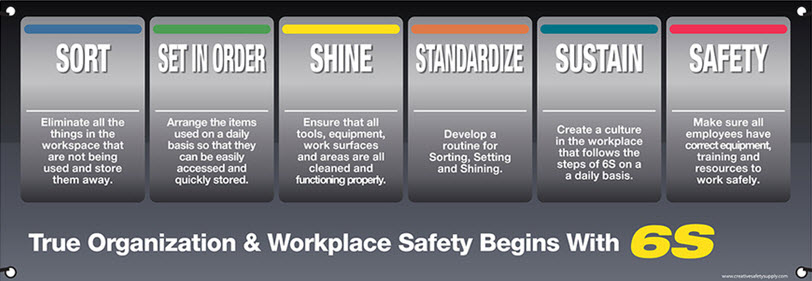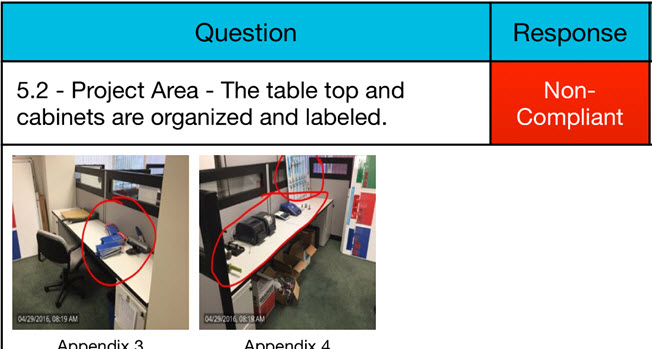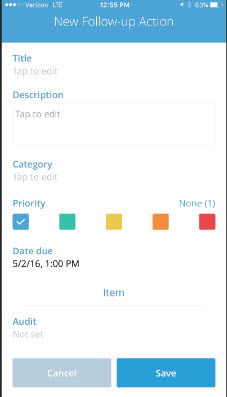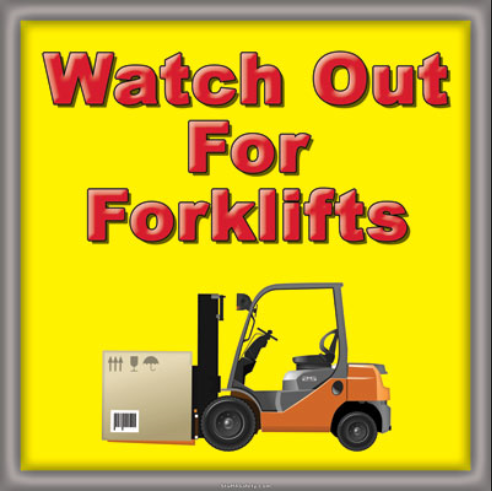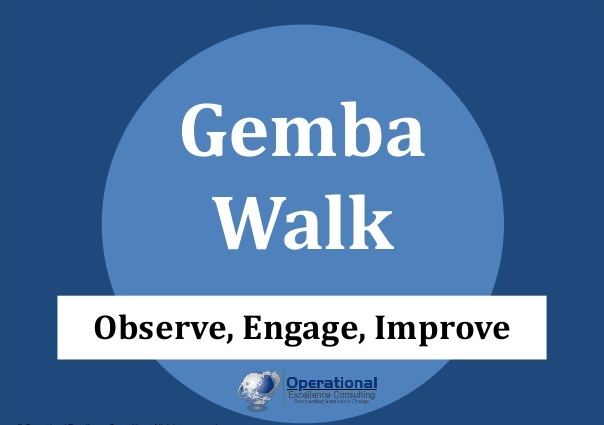Information
-
Department Name (i.e. Weighing 6S Monthly Audit)
-
Conducted on
-
Was an additional Auditor Present?
-
Was an invitation sent to another auditor for participation? <br>i.e. Safety, Quality, OE, Maintenance, Packaging, Manufacturing<br>"It is always better to have a second set of eyes to help look for improvement opportunities"
-
-
Prepared by
-
While conducting the 5S Monthly audit, always start at the 5S Tier 1 Board This board will help identify whether the 5S program in the area is starting to become sustainable .
-
-
As you are conducting the audit, take photos of any discrepancies or improvement opportunities so they can be added to the audit at any time. You DO NOT want to have to back track to an area just to answer an audit question. Answer the audit questions in order if possible, but pay attention to all the 6S's while you are performing an audit. Add annotations to your photos for additional clarity if needed.
-
-
Follow-Up Actions may be necessary as you are performing your audit. Example - An IPO will need submitted due to a safety risk, a Quality risk was observed that needs immediate attention. Just add the follow up and include the urgency details (Color Coded), and email reminders.
-
1.0 - 6S SIC Board (Visual Management Board)
-
1.1 - 6S daily audit scores are documented on the 6S SIC Board, including the overall average score? (ALL SHIFTS) (Scores are NOT to be erased by any other shift and not until the next score is calculated.) The average score is to be calculated and documented by 2nd shift once they complete their audit.
-
1.2 - Daily audit observations are being notated on the 6S board. NOTE: "A daily score of an 8 should have TWO observations to document"
-
1.3 - The top three Trending Observations have been notated (trending only). Discuss during weekly 10 minute meeting.
-
1.4 - Monthly Action Plan/ 6S Improvement plans are documented on the board (Top 3 only). (Only document achievable actions that can be completed within a month in this spot)
-
1.5 - Previous Monthly audit results have been posted on the board for teams to observe. (iAuditor paper copy)
-
1.6 - Previous monthly audit follow up items have been addressed and continuous improvement efforts were noticed within the area.
2.0 - Hallways/Gray Zones - NOTE: Pay attention to all 6S's while conducting the audit. Always pay close attention to safety opportunities!
-
Watch out for Fork Trucks while conducting audit!
-
2.1 - Area is free of clutter which could cause a trip hazard.
-
2.2 - Fire Extinguishers, AED Units, Chemical Spill Kits, Eye wash Stations and any Safety equipment are prominently displayed and are unobstructed at all times.
-
2.3 - Safety zones are clearly marked and free of obstruction.
-
2.4 - ALL floors / working areas are clean and free of powder, dust, or debris. Items that do not belong in the area have been removed.
-
2.5 - Walls, partitions, railings, etc. are painted and kept clean. Tiled areas are free of cracked and broken tiles.
-
2.6 - All materials (skids, staged product, WIP Material, Raw Material, Etc..) are in their proper designated space. <br><br>
-
2.7 - Vacuuming of gray zone appears to be performed frequently. Cleaning due diligence is becoming part of the everyday routine in the area. It is apparent that the are is "Shined" on a routine basis. Foreign Material risks are at a minimum.
-
2.8 - Standardized floor markings and signage are in place throughout the department. Floor marking are in good condition and do not need replaced.
-
2.9 - Scales are free of powder, dust or debris.
-
2.10 - No other Quality risks or concerns exist in the area.
-
2.11 - Emergency egress routes and areas are clear and are accessible.
-
2.12 - PIT Work sheets are being utilized and are up to date.
-
2.13 - All pallet jacks in the area belong to the unit operation and are properly labeled. Jacks from other areas are not present.
-
2.14 - Quality - Water Sources/Outlets are NOT blocked in any way. Blocking a water source could result in the lines not being flushed causing microbial bacteria build up in the water lines.
-
2.15 - (Blue Desk)/ Batch Ticket Areas - Area is clutter free and Organized inside drawers?
-
2.16 - No other unsafe conditions or hazards exist in the area.
-
2.17 - Did all questions meet compliance? If answer is NO, please list/suggest at least one improvement opportunity.
-
Opportunity Response:
3.0 - Production Rooms
-
3.1 -NO boxes of gloves, Terri Towels/wipes are located inside the production room while processing.
-
3.2 - Scoops, AQL cups and any other utensils are covered with a poly liner when not being utilized. Open Containers or boxes are covered with a poly liner when not being dumped into.
-
3.3 - No EXCESS tablets, capsules, powder or debris on production room floor. Cleaning due diligence is apparent. Foreign Material risks are at a minimum.
-
3.4 - Production room floors, windows, ledges and equipment are wiped clean when possible. When unexpected delays occur, operators habitually & automatically sweep floors and wipe equipment.
-
3.5 - Only equipment that is going to be used is present in the production area. All equipment/parts, supplies, solutions are stored in a labeled organized location.
-
3.6 - All bottles or containers inside production rooms have a label stating contents and expiration dates.
-
3.7 - Tools used for equipment cleans and set-ups purposes are organized and labeled.
-
3.8 - When tools are not being used, they are placed back in their designated place.
-
3.9 - Rubber stoppers on ladders are in place and not damaged.
-
3.10 - Employees are wearing their proper PPE for the room assigned.
-
3.11 - Do operators have to perform repeated bending over motions while performing the job within the production room?
-
3.12 - No other unsafe risks or behaviors exist.
-
3.13 - Did all questions meet compliance? If answer is NO, please list/suggest at least one improvement opportunity in the Opportunity Response Field.
- Opportunity for Improvement
- Yes - Meets Critereia
-
Opportunity Response:
4.0 - Washrooms
-
4.1 - No garbage, unused tools or equipment is present in the washroom when not in use.
-
4.2 - Garbage can is in designated location and not full or overflowing.
-
4.3 - Water hose & nozzle are disconnected and hanging in specified location.
-
4.4 - Water hose has proper clearance from the floor. Not touching.
-
4.5 - Mop buckets and cleaning buckets are placed upside down on skids to drain excess water.
-
4.6 - All washroom supplies (Garbage cans, brooms, mops, mop buckets, Cleaning utensils, etc..) are stored in a neat and clean manner. Place for everything, everything in its place. Labeled/ organized. It is obvious where it belongs and is easily available when needed.
-
4.7 - Spray bottles are labeled and marked appropriately with signatures, expiration dates and contents.
-
4.8 - No other Quality risks or concerns exist in the area
-
4.9 - No unsafe conditions were observed in this area.
-
4.10 - Did all questions meet compliance? If answer is NO, please list/suggest at least one improvement opportunity.
- Opportunity for Improvement
- Yes - Meets Critereia
-
Opportunity Response:
5.0 - Hold for Disposition areas (Batches under investigation)
-
The ONLY Batches to be stored in these areas are: Product in which the disposition of the batch has not yet been determined, this includes commercial and R&D batches. Batches on hold for cosmetic defects do not get placed in this area. X-Lots (Engineering Batches) are to be stored in the 3rd Warehouse (Weighing Warehouse), NO rejected batches are to be stored in this area. Once the product has been deemed rejected, transfer to the 4th floor Warehouse reject drop of zone.
-
5.1 - All Batches stored in the Hold area have a Quality Hold tag or Investigation number attached for reference.
-
5.2 - Hold for disposition barriers are in place and surround all batches placed on Quality hold. The area has been marked with the Department owner and SLOC Number.
-
5.3 - Product that is NOT on Quality hold is not to be stored in this area. An aisle way of 18 inches must segregate the two areas.
-
5.4 - Area is floor marked with red tape and appropriate signage is hung in hold areas.
-
5.5 - No other Quality risks or concerns exist in the area.
-
5.6 - No unsafe conditions were observed in this area.
-
5.7 - Are there any rejected materials stored within the "Hold Area"? If YES, contact the Department Leader. ALL rejected material must be removed from the area and taken to the drop off zone within 72 hours.
-
5.8 - Did all questions meet compliance? If answer is NO, please list/suggest at least one improvement opportunity.
-
Opportunity Response:
6.0 - - Equipment Storage Rooms/Area
-
6.1 - No garbage is present in the storage area. No unused or unnecessary items are being stored in the storage areas. 3S clean does not exceed 90 days.
-
6.2 - Equipment and parts are stored in its proper (marked,labeled) space.
-
6.3 - All equipment stored in this area must be clean, wrapped and/or bagged, including a signed/check signed and dated cleaning tag
-
6.4 - All equipment stored in this area has a designated lane or space.
-
6.5 - Logbook and laminated 3S tag is properly filled out according to the 3S cleaning procedures.
-
6.6 - No other Quality risks or concerns exist in the area.
-
6.7 - Aisle ways are clear for easy removal of equipment and trip hazards.
-
6.8 - No unsafe conditions or behavior were observed in this area.
-
6.9 - Did all questions meet compliance? If answer is NO, please list/suggest at least one improvement opportunity.
- Opportunity for Improvement
- Yes - Meets Critereia
-
Opportunity Response:
7.0 - Batch ticket storage Areas - If applicable
-
7.1 - No clutter or garbage is present in the area.
-
7.2 - Batch ticket bins are labeled and organized.
-
7.3 - Area is free of dust and debris and foreign material risks. It is apparent that routine cleaning is performed in the area daily.
-
7.4 - There is a place for everything and everything in its place. Necessary bins or other organizational needs are in place.
-
7.5 - No other Quality risks or concerns exist in the area.
-
7.6 - No unsafe conditions are present.
-
7.7 - Did all questions meet compliance? If answer is NO, please list/suggest at least one improvement opportunity.
- Opportunity for Improvement
- Yes - Meets Critereia
-
Opportunity Response:
8.0 - Supply Room Storage / Garage Areas / Supply Cabinets
-
8.1 - No clutter or garbage is present in the area or cabinet
-
8.2 - Non-Contact Equipment and Supplies are labeled and organized. If applicable
-
8.3 - Non-Contact Parts drawers are binned (parts separated), labeled and organized. " Place for everything and everything in its place" -If applicable
-
8.4 - Tools are stored in an organized manner inside the garage. If applicable
-
8.5 - Cabinets and racks used for supplies are labeled an organized.
-
8.6 - There are floor markings and signage for segregation and organization of equipment, carts and supplies.
-
8.7 - The area is free of foreign material, dust or debris. It is apparent that routine cleaning/vacuuming is completed frequently. No other quality risks or concerns exist in the area.
-
8.8 - There is standard work utilized in this room to give guidance for room standards.
-
8.9 - No unsafe conditions or behaviors are present.
-
8.10 - Did all questions meet compliance? If answer is NO, please list/suggest at least one improvement opportunity.
- Opportunity for Improvement
- Yes - Meets Critereia
-
Opportunity Response:
Sign Off
-
2nd Auditor name and signature (If Present) If not present , NO signature is needed.
-
Auditor's Name and signature is Mandatory
